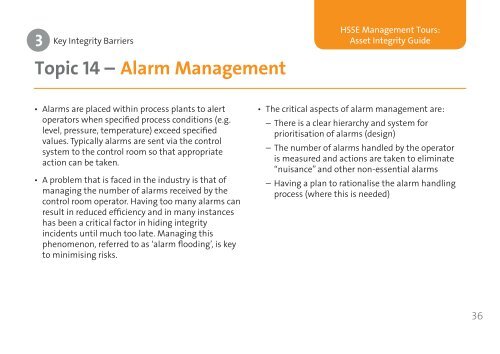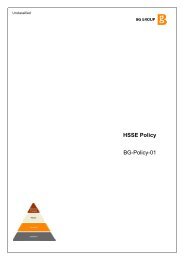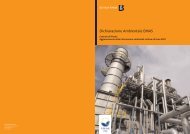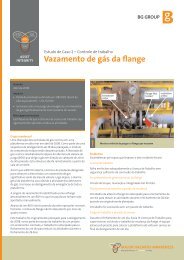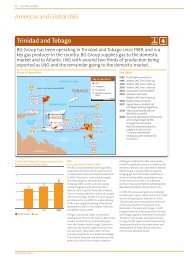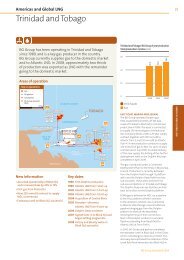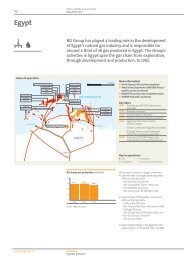HSSE Management Tours - BG Group
HSSE Management Tours - BG Group
HSSE Management Tours - BG Group
Create successful ePaper yourself
Turn your PDF publications into a flip-book with our unique Google optimized e-Paper software.
3<br />
Key Integrity Barriers<br />
Topic 14 – Alarm <strong>Management</strong><br />
• Alarms are placed within process plants to alert<br />
operators when specified process conditions (e.g.<br />
level, pressure, temperature) exceed specified<br />
values. Typically alarms are sent via the control<br />
system to the control room so that appropriate<br />
action can be taken.<br />
• A problem that is faced in the industry is that of<br />
managing the number of alarms received by the<br />
control room operator. Having too many alarms can<br />
result in reduced efficiency and in many instances<br />
has been a critical factor in hiding integrity<br />
incidents until much too late. Managing this<br />
phenomenon, referred to as ‘alarm flooding’, is key<br />
to minimising risks.<br />
<strong>HSSE</strong> <strong>Management</strong> <strong>Tours</strong>:<br />
Asset Integrity Guide<br />
• The critical aspects of alarm management are:<br />
– There is a clear hierarchy and system for<br />
prioritisation of alarms (design)<br />
– The number of alarms handled by the operator<br />
is measured and actions are taken to eliminate<br />
“nuisance” and other non-essential alarms<br />
– Having a plan to rationalise the alarm handling<br />
process (where this is needed)<br />
36


